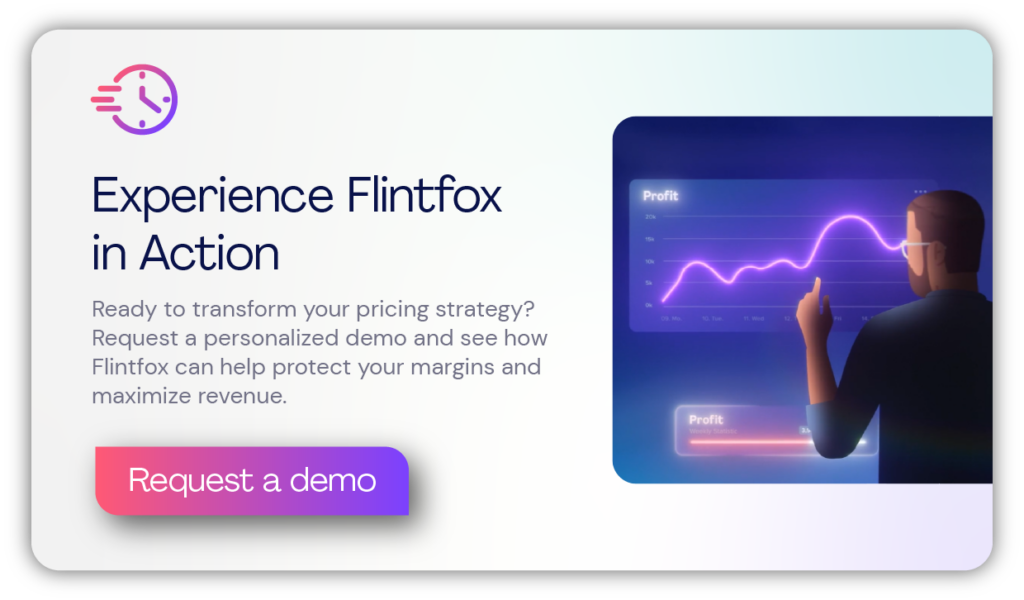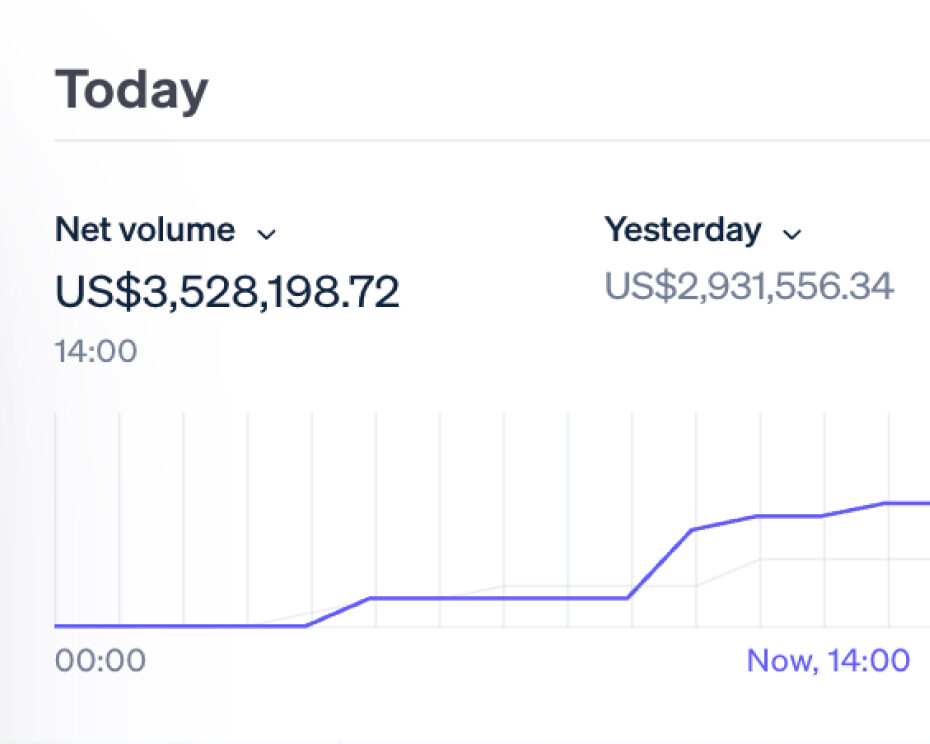Competition-Based Pricing: Advantages & Disadvantages
Competition-based pricing is a pricing model commonly used in several industries, including retail and e-commerce. A competitive pricing strategy allows companies to maintain an advantage by strategically setting prices above, below, or the same as their direct competitors.
One of the key benefits of competitive pricing is that it helps businesses understand their market position, attract new customers, and boost profits. By offering lower prices than rivals, companies can increase sales, enhance brand loyalty, and ultimately improve customer satisfaction.
Competition-based pricing can be a highly effective strategy, but it’s not right for every business. Let’s look at the definition of competition-based pricing, when to use it, and the advantages and disadvantages of this pricing model.
Table of Contents
- What is competition-based pricing?
- What are the types of competition-based pricing?
- When should you use competition-based pricing?
- When shouldn’t you use competition-based pricing?
- Advantages of competitor-based pricing
- Disadvantages of competition-based pricing
- Examples of competition-based pricing
- The smart way to implement a competition-based pricing strategy
What is competition-based pricing?
With competition-based pricing, companies conduct a competitive pricing analysis and decide whether to set their prices the same, above or below the competition. Unlike cost-plus pricing, a competitive pricing model doesn’t look internally at production costs; instead, it looks outward at competitor prices and consumer demand to determine the optimal final price. Conducting a competitive price analysis helps businesses optimize their pricing strategies and remain competitive in their market by utilizing various methods, including online research and tools for price comparison.
What are the types of competition-based pricing?
With competition-based pricing, companies make three types of pricing decisions — to set prices above, the same, or below their direct competitors.
- Above the competition (premium pricing)
Setting a premium price above market value can be effective if the company demonstrates that the product or service is somehow superior to the competition. This could mean a more significant investment in marketing to position the brand as ‘luxury’, added features, or favorable customer terms like extended warranties.
- The same as the competition (price matching)
Price-match promises are a common competition-based pricing strategy companies use to stop customers from switching to competitors for a better price. With this competitor-based pricing strategy, companies promise to offer the same price as their competitors for identical products. Branding and marketing also allow companies to remain competitive while differentiating themselves.
- Below the competition (loss leader pricing)
Intentionally setting prices below competitor selling prices (also known as loss leader pricing) can effectively grow market share and revenue in the short term. Marketing yourself as the lowest cost option is a genuine pricing strategy, but it can affect profitability and damage perceived value in the long term.
- Penetration pricing
Penetration pricing is a strategic model where businesses set lower prices than their competitors to attract customers and expand their market share. This approach is particularly effective for businesses entering mature and competitive markets, as it helps in customer acquisition and market expansion. By offering lower prices initially, companies can quickly build a customer base and establish a presence in the market.
When should you use competitive pricing?
Competitor-based pricing is often used in markets where numerous companies sell similar products or services, like retail and e-commerce. In environments with minimal product variation and many options available, brands may rely on a competitor-based pricing strategy to determine their optimal pricing positions. This can be especially useful for startups entering a new market without historical pricing data and those that need a fast route to market. Implementing competitive pricing strategies involves ongoing market research and regular monitoring to maintain competitiveness and align with business goals.

When shouldn’t you use a competitive pricing strategy?
A competitor-based pricing strategy isn’t a viable choice for every type of business. For example, a company that dominates a market with very little competition would be better off using other pricing strategies like value-based pricing. Likewise, a competitive pricing strategy wouldn’t suit businesses with a very unique product or service that allows them to dictate the price.
Advantages of competition-based pricing
Competition-based pricing offers several advantages to businesses, including:
1. Ease and simplicity
Unlike more complex pricing strategies, competitor-based pricing is relatively simple. Companies review pricing for similar products and services in the market and decide where they should sit relative to these. If their product is of superior quality, they may set their price slightly higher than competitors and market these features heavily. If they offer a ‘basic’ option accessible to more potential customers, they may opt for a loss leader pricing strategy.
2. Speed to market
Competition-based pricing can be an excellent choice for brands that want to enter a market quickly and easily. New brands without enough data negate the need for detailed research because they can capitalize on work done by existing competitors.
3. Increased revenue and market share
A competitor-based pricing strategy, especially price matching or loss leader pricing, can help businesses claim market share from competitors. Savvy customers always conduct price comparisons — in-store or online — to get the best possible deal. This tactic can effectively maintain customers or lure them away from the competition.
4. A greater profit margin
Competitor-based pricing has the potential to boost profits when done correctly. A premium pricing strategy can certainly achieve this, though it may be at the expense of volume. Production costs should also be considered if you intend to price drop or price match. Staying across all competitors’ prices can be virtually impossible — this is where dynamic pricing software like Flintfox comes in. Our Pricing Engine can analyze huge data sets, including competitor pricing, in seconds.
5. Customer satisfaction
In well-established markets, customers are familiar with price points and have solid expectations of value. Using competitor-based pricing means customers can immediately judge value based on how prices differ between brands.
Disadvantages of competition-based pricing
Competitor-based pricing models don’t come without risks. Companies considering a competition-based pricing strategy should also understand the following disadvantages.
1. Lower margins
It’s easy to see how a price matching or loss leader pricing strategy can lead to slimmer margins. In these situations, companies risk a race to the bottom; eventually, the selling price fails to cover the cost of production, and customer expectations are dragged down so low that it’s not viable for businesses to operate.
2. Leaving money on the table
When companies base their prices on their competitors’ prices, they risk leaving potential revenue and profit on the table. A lack of price intelligence and qualitative research means some businesses may over or under-price their products. A superior quality product marketed well can command a higher price, regardless of how competitors price their products.
3. Lack of insight
If you rely solely on competitors to establish your own prices, you can only be as accurate as they are. Using this pricing strategy assumes your competitors have done their due diligence. Innovative businesses inform competitor pricing with dynamic tools like Flintfox’s pricing engine. This makes rapid calculations based on the market rather than painstaking manual calculations or best guesses.
Examples of competition-based pricing
Let’s look at some instantly recognizable uses for competitive-based pricing.
1. Premium pricing example
Company A sells hair dryers. The average price of a hair dryer in their market is $100. Company A’s hair dryers come with more heat settings, ceramic technology, a 3-year warranty, and premium branding. Based on their offering, they set the per unit price at $189.
2. Price matching example
Company A is an online pet retailer. They sell pet food and pet supplies online. Their nearest competitor is Company B. Company A makes a marketing claim that they will match any price for the same product as Company B.
3. Loss leader pricing example
Company A sells vitamins. The average cost of Vitamin C across all brands is $35 per bottle. Company A’s Vitamin C is of the same quality as the competitors, but they are new to the market and want to make share gains. They price their product at $30 per bottle to lure price-sensitive customers away from their competitors.
The smart way to implement a competition-based pricing strategy
Say goodbye to spreadsheets and hello to simplicity. Flintfox’s Performance Pricing Engine takes complex data sets, including niche competitor information, and delivers accurate pricing at hyper-speed. Easily connect Flintfox to your ERP, use existing POS systems, and access what you need on any device in real-time. Maximize your profits and gain a competitive advantage, regardless of the complexity of your pricing structure or business model.
Ready to take your pricing strategy to the next level? Get in touch today.
Powerful pricing software supported with deep experience
Flintfox gives you flexibility with your application, unprecedented speed and power from our pricing engine and support from our dedicated team.
